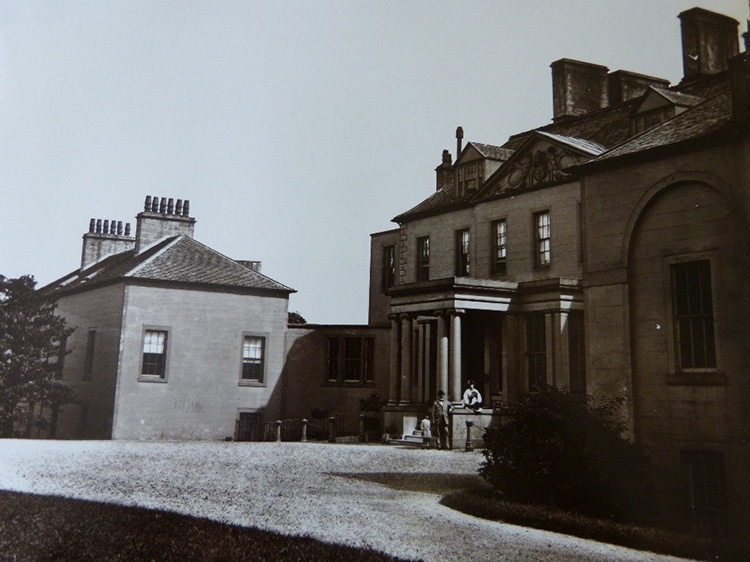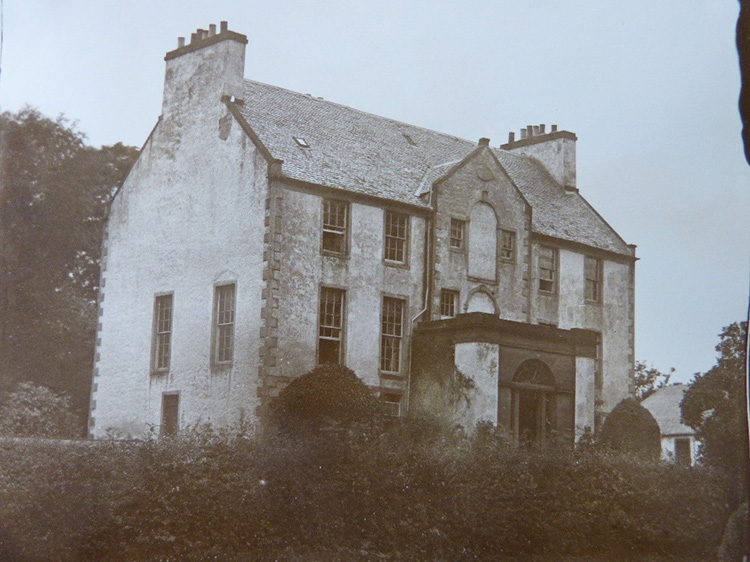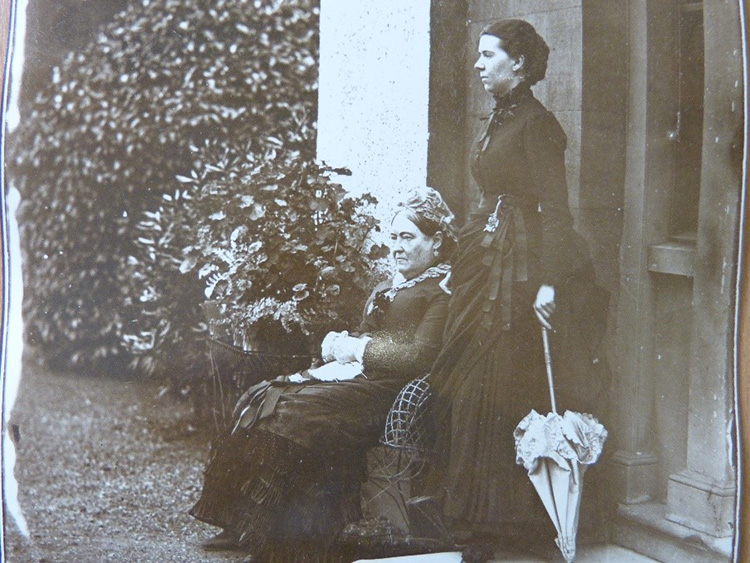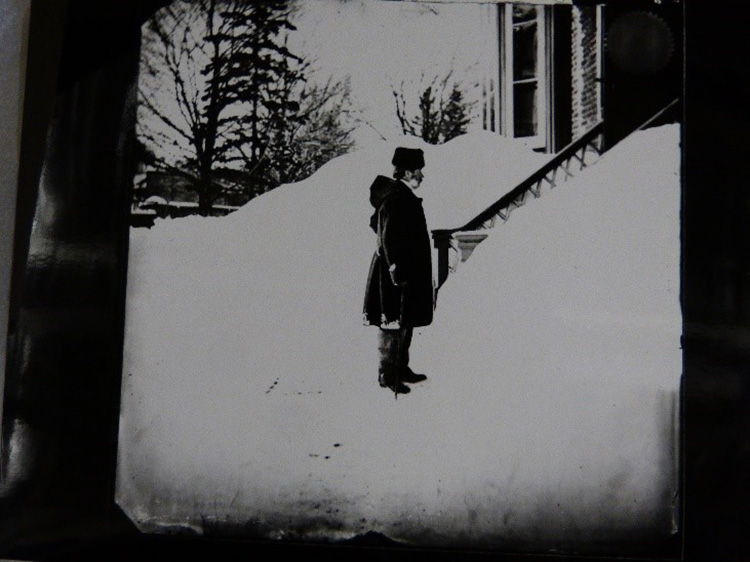The lantern-slide tourist, week 5: provenance
In our last 4 posts we have described the nature of much of the General Rollo collection, and have highlighted the journeys of a (presumably) well-to-do traveller in the later years of the 19th, and the early 20th centuries, around popular visitor destinations of Europe and further afield, as well as nearer to home. But what we haven’t done so far is to reveal anything about the traveller who pieced together this collection, and who doubtless entertained family and friends with exotic picture-shows. It is a subject which has been bypassed because it is in itself a bit of a mystery, and a subject worthy of its own separate post. Pilar has enlisted the help of Dr Norman Reid, former Keeper of Manuscripts and Muniments, head of Special Collections and Assistant Director of the Library, to see what he can share about the background to the collection.
Norman says:
The General Rollo collection is one of many which were brought in to the Library in the 1960s and 1970s, when the photographic collections were expanding rapidly under the enthusiastic, even aggressive, acquisition programme led by the then Keeper of Manuscripts and Muniments, Robert Smart. Many collections, both large and small, were donated in this period, creating the backbone of a remarkable photographic archive which documented virtually the entire technical history of photography, from the early 1840s to the present. Some of the smaller collections, however, perhaps overshadowed by more prestigious bed-fellows, have little documented provenance. This is one such – there is no information on file regarding precisely when or how it was acquired, or from whom. Most crucially, nothing in the acquisition records give us any indication of who this lantern-slide tourist was.
Was this man the lantern-slide tourist? The lapel badge he is wearing would give us a clue about his affiliations. Could you help us to identify the badge?
Perhaps in hope of tapping a longer institutional memory, Pilar Gil contacted me when she began work on the collection, to ask if I could shed any light on the question. Sadly, I couldn’t (other than directing her to others who just might know more). But the question stirred my curiosity. There are two ‘Rollo’ collections in the archive; but the other, relating to a well-known Cupar family, bore no obvious relation to these slides. Although there might be a presumption that the lantern-slide tourist was a member, or associate, of that extended family, we had no information with which to support the supposition. One might assume that the collector was a man with the surname Rollo, who was a military General – but on the other hand, might this in fact be a ‘Rollo collection, general’, as opposed to the specific collection of the photographs by T. Landale Rollo of the other collection?
Landale Rollo glass negative collection
It seemed that the photographs themselves had to be the starting point for any voyage of discovery. Were there recurring places or people featuring, that might indicate a path to travel? Luckily, many of them are identified. A look at the online list of images1 came up with quite a few references to ‘Creedy’. ‘Mama (Lady Davie)’ was also identified individually; and there were quite a few shots taken at ‘Earnbank’, and ‘Raith House, Kirkcaldy’. Something here to get one’s teeth into!

It did not take long to track down Creedy, an estate in Devon2 which was, helpfully, the home of the Davie family. It was also heartening to see that some of the photos of Lady Davie were taken at Earnbank3 a country house at Bridge of Earn near Perth. We were looking, then, for the connection between the Rollo and Davie families. The Perthshire connection seemed also to make it quite likely that the Rollo family concerned was the family which in the 19th century became the holders of the title Baron Dunning of Dunning4.

There were a few pointers here to start a search, which enabled Pilar (who had access to the actual photos, rather than just a list of them) to carry it further. She soon discovered both that the assumptions about the family identifications were correct, and that the families were linked by marriage, as we suspected. General Hon. Sir Robert Rollo (born 1814) was the son of John 8th Lord Rollo of Duncrub (the family title previous to Baron Dunning) and Agnes Greig. He married Harriet Anne Ferguson Davie (referred as H.A.R. on the list of images), of the Davie family of Creedy, in 1851. Her father, who was created the 1st Baronet Ferguson Davie of Creedy in 1847, had been born, and lived much of his life in Scotland, perhaps creating the link which led to the marriage between the families. Several images on the collection are taken in Raith House5, the estate of the Fergusons. Robert Rollo had been a Colonel in the Black Watch, and in his later career was Military Secretary to the Commander-in-Chief in Canada before retiring in 1881. It seems likely that after retirement he returned to a family home in Scotland. He lived until 1907, dying at the age of 92. Lady Rollo outlived him three years, dying on 1910 at the age of 86.

Many of the subjects of the Canadian photographs in the collection are identifiable as notable citizens of Montreal, in the social circle of a couple such as Lt-Col. and Lady Rollo. In Montreal, they lived in Durocher Street, a place also mentioned in the lists of images. Lady Rollo was the president of the St Andrew’s Home, a house which provided a home for Scots in Montreal who required shelter; some of the listed individuals had connections to the Home, and others to Sir Robert’s office.

More research into the collection, and further identifications, particularly of the family members photographed, will doubtless shed more light on the provenance and dating of this collection. A few questions remain, however. Although the glass negatives seem of an earlier date, taken during Colonel Rollo’s lifetime, some of the lantern slides are unquestionably more modern, depicting young couples and groups of friends cycling through Scotland and the Pyrenees. The collection, composed of images of different formats, seem to encompass different generations, possibly of the same family. So far, Sir Robert seems to be the only person in the immediate family likely to have been described as ‘General Rollo’, and the number of named individuals within the Montreal social scene of the 1870s would tend to suggest that this was not the work of an occasional family visitor. It is a body of photographs closely related to this couple, and to their family, their residences, and social connections – it is definitively not a ‘general’ Rollo collection.
The digitisation of the remaining photographs, allowing much more detailed inspection, will undoubtedly reveal more, and may perhaps open the door to solving the riddle. In the meantime, if anyone can shed any further light on these Rollos, please do get in touch with Special Collections.
Norman Reid
Former Head of Special Collections